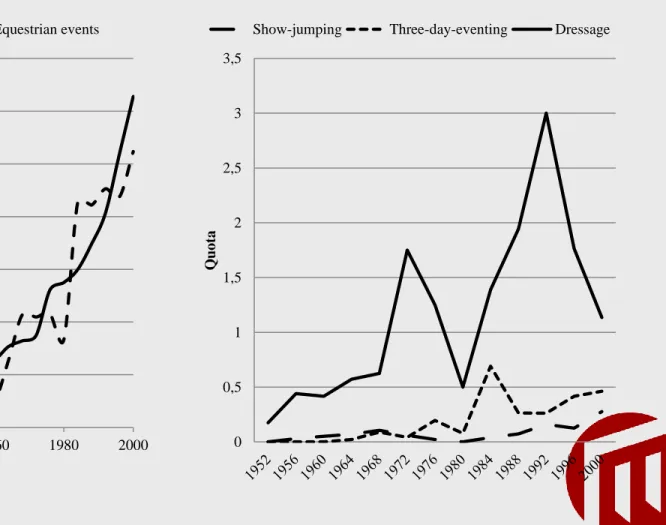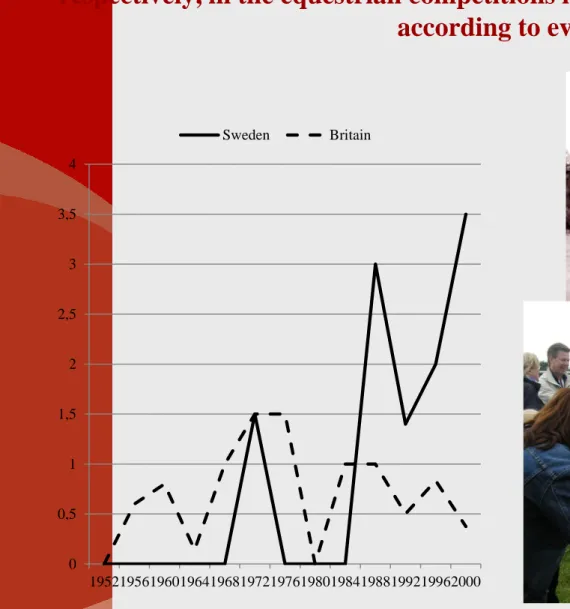Gender relations in Equestrian Sports
1952-2000
Gender relations in Equestrian Sports
• Variances according to competition level, even
(dressage, show-jumping, three-day eventing)
• Olympic Games 1952-2000
Olympic Equestrian Events
• Included 1912
• Women were admitted
in
1) Dressage in 1952
2) Show-jumping in
1956
3) Three-day eventing
in 1964
Figure 1. Quota female/male participants in the Olympic Games, 1900–2000, and in the Olympic equestrian events, 1952–2000
;
Figure 2. Quota female/male participants in the equestrian competitions in the Olympic Games, according to event. Years of the Olympic Games 1952–
2000. 0 0,1 0,2 0,3 0,4 0,5 0,6 0,7 1900 1920 1940 1960 1980 2000 Q uo ta Year
Olympic Games Equestrian events
0 0,5 1 1,5 2 2,5 3 3,5 Q uo ta
Dressage - a feminine event?
Ladies’ day on Stadion in gracefulmedal dressage
Lis Hartel as well as Liselotte
Linsenhoff showed such gentleness, grace and flexibility that they made several of their male competitors seem too strict. The ladies’ dressage passed as a light and amusing game. There was something almost rococo-esque over the horses’ dance, as they floated by in canter, tripped along easily and
pirouetted. Only the music was missing. (Svenska Dagbladet, 17 June 1956
Figure 3. Quota female/male participants from Britain and Sweden,
respectively, in the equestrian competitions in the Olympic Games 1952–2000, according to event. 0 0,5 1 1,5 2 2,5 3 3,5 4 1952195619601964196819721976198019841988199219962000 Sweden Britain
Conclusions
• Increasing number of female participants over time (1952-2000) • Female participants in majority in dressage (connection to social
construction of femininity/dressage)
• More female participants in three-day eventing than in show jumping (commercial reasons?)
• More female participants from Britain until 1980’s, thereafter more female participants from Sweden (connection to partaking in WW1 and WW2; women of means entering the scene in Britain;
governmental support to cavalery in Sweden until 1960’s;

